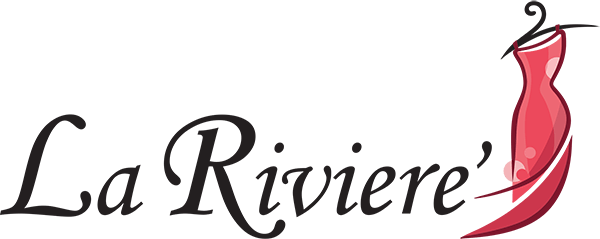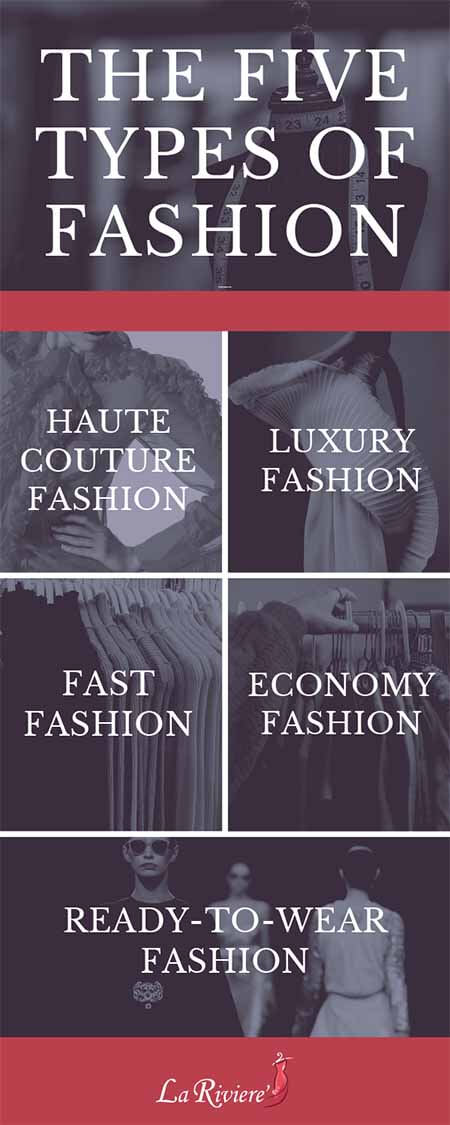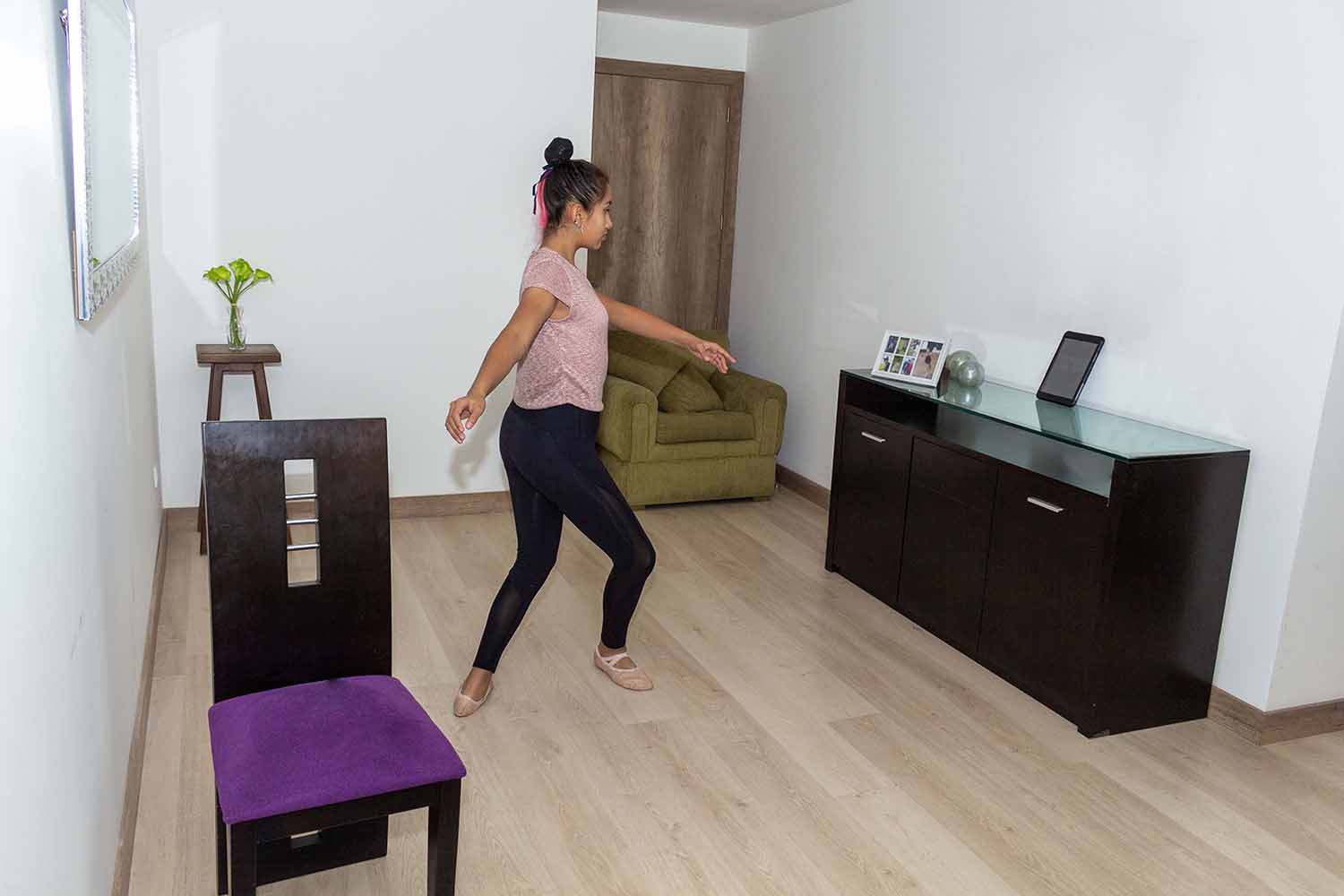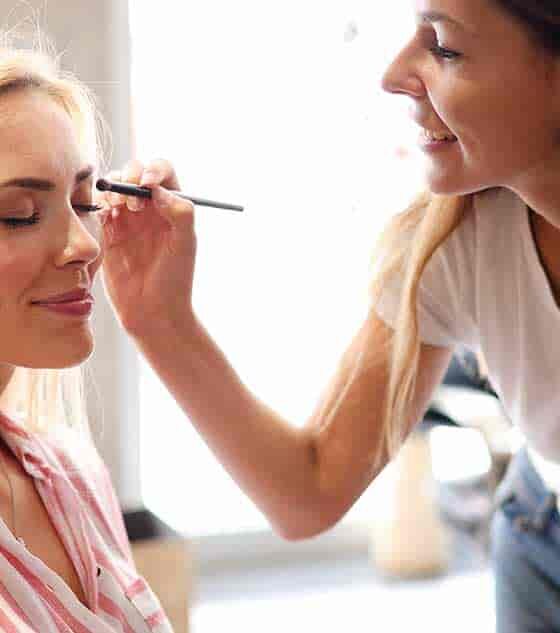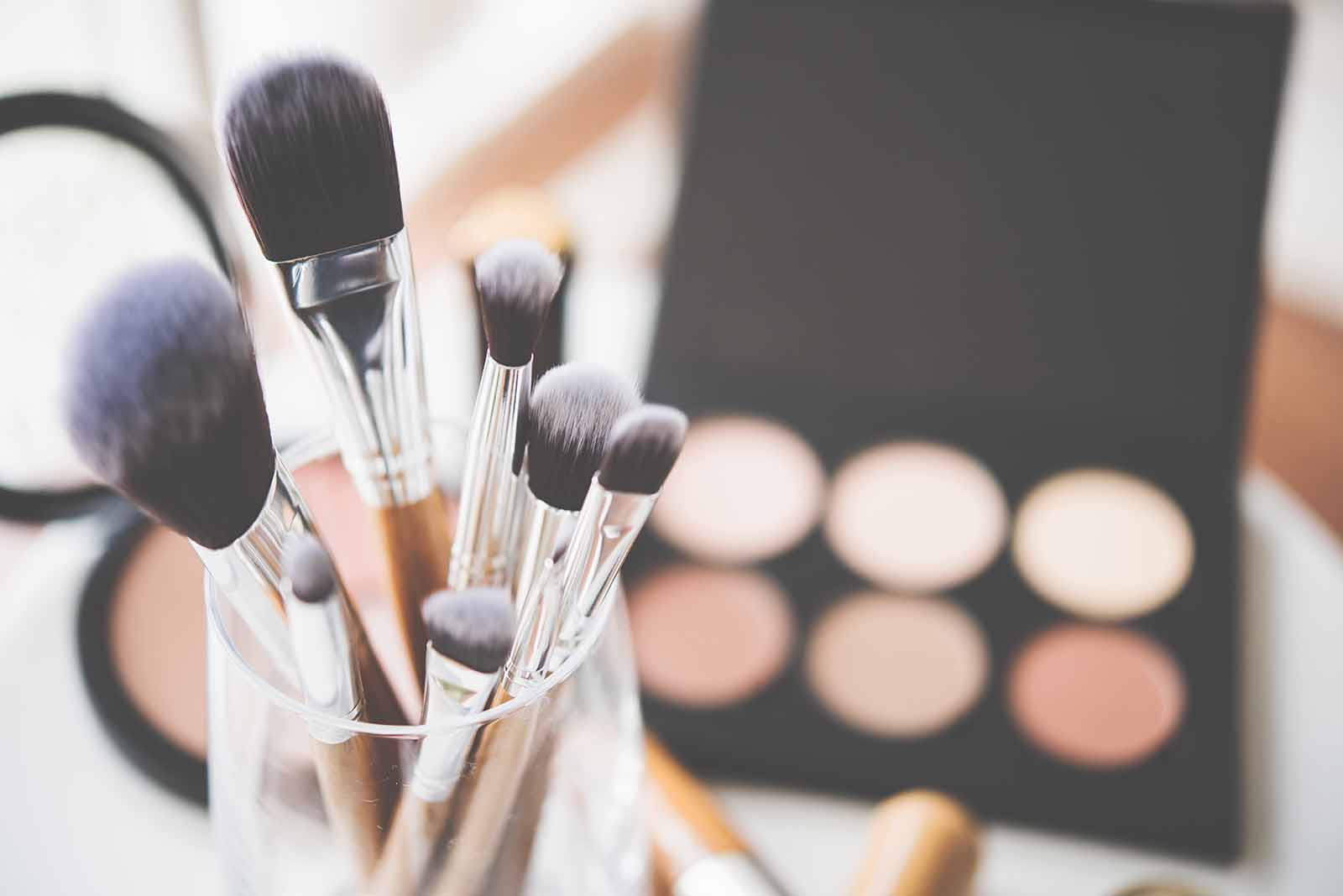The 5 Types of Fashion Design Explained

If you spend any time studying fashion, you will probably come across the various types of fashion design. The names of these types of design may vary slightly based on the source, but in general, the idea of fashion design hierarchy remains the same.
Fashion design can generally be divided into tiers, and while there exists some overlap and subcategorization, there are five main types of fashion design.
The five types of fashion design are:
- Haute Couture Fashion
- Luxury Fashion
- Fast Fashion
- Economy Fashion
- Ready-To-Wear Fashion
These types of fashion design will be explained in detail below, but in general, these tiers of design start with haute couture being the most skilled, most exclusive fashion creation, progressing down to economy fashion, which is the cheapest, lowest-quality fashion items.
Some of these fashion types have interchangeable names, such as ready-to-wear fashion sometimes being called high street fashion or prêt-à-porter, so being familiar with the variety of terms used can be helpful in order to avoid confusion.
Read on below to educate yourself about the nuances of each type of fashion design, as well as how to enter the field of fashion design.
What Is Fashion Design?
Fashion design is the art of creating clothing and accessories. It can range from the creation of pieces that are valued more as art than for function to pieces that are minimalist and practical.
Fashion design can be thought of as an art form, with careful consideration to aesthetics and beauty when designing clothing and accessories. Fashion design varies over time and adapts to reflect social and cultural influences. As such, it can require a lot of creative flexibility and has a finger on the pulse of society, ready to shift and evolve with changing tastes.
Every piece of clothing or accessory originally starts with an idea. These ideas are brought to life by using fashion design to determine everything from the creative vision to the market research guiding the production, to the fabric used, to the overall aesthetic message and beyond, in order to bring about the final product.
The Five Types of Fashion Design Explained
Type 1: Haute Couture Fashion
At the top of the fashion design hierarchy is haute couture. Haute couture involves the creation of limited, custom-fitted clothing and accessories that are individual works of art. Haute couture is literally French for “high dressmaking,” and originated with made-to-order garments designed and sewed for private clients.
Haute couture pieces are often constructed by hand, taking countless man-hours. Most often the pieces are worked on by an entire team of skilled designers in an atelier, or workshop. The pieces can require several fittings in order to perfect and are usually made of the finest materials and expensive notions. These pieces are usually one of a kind, with extreme attention to detail.
In order to qualify as haute couture, fashion designers must be designated by the French government. Designers must own an atelier in Paris, employ at least 15 full-time employees, and release 35 new, original looks to the public twice a year. These guidelines were established in 1945 and must be adhered to strictly, even by the biggest fashion houses.
Type 2: Luxury Fashion
Luxury fashion constitutes the fashion design that bridges the gap between exclusive, bespoke, custom made garments and mass-produced, readily available clothing. Luxury fashion includes high-quality articles of clothing that are not hand-made but are also not produced in large quantities.
Because of luxury fashion’s slightly more exclusive collection, it can be more desirable to some since it has limited availability. Luxury fashion can vary in quality but, usually, it consists of more expensive materials and nuanced designs. With this attention to detail usually comes a higher price tag.
While luxury fashion items are still not as expensive as haute couture items, the prices are high enough to still give consumers a sense of being part of an elite market, with some of the steep prices placing the items outside the buying range of many average consumers.
The luxury fashion market continues to grow, and it is expected to continue growing for the foreseeable future. As such, there will be a continued need for skilled fashion designers in this market area.
Type 3: Fast Fashion
The majority of apparel brand names that average consumers are familiar with are most likely fast fashion brands. Fast fashion consists of mass-produced clothing with a very rapid turnover rate.
The driving idea behind fast fashion is the desire to put trendy, marketable clothing on the market as cheaply as possible. These fashion designs usually jump from catwalk shows to retail hangers in a lightning-quick process. Some of the most notable fast fashion houses can have pieces developed, produced, and in the store within a couple of weeks of the inspiring fashion show. Other companies may take up to 6 months to replicate these trends.
Fast fashion design is less tethered to the idea of seasonal collections of clothing. While luxury and high-end ready-to-wear design houses will often release new clothing on a seasonal basis, fast fashion will frequently buck this trend and release multiple pieces every week.
Because of the rapid pace of fast fashion, many of the designs created may be obsolete or out of style in only a few months. However, the more accessible price point of fast fashion appeals to consumers who want to look trendy but not spend an entire paycheck on an outfit.
Fast fashion has more recently come under scrutiny, with many claiming that the pieces produced are low-quality and encourage a culture of throwaway fashion. This trend results in items often only being worn once before being thrown away, resulting in a massive environmental and economic impact upon the world.
Type 4: Economy Fashion
At the bottom of the fashion design hierarchy is economy fashion. This level of fashion is below even fast fashion, with the ultimate goal being solely to mass-produce garments in the most efficient manner and ship them to stores. The goal of most economy fashion is for the producer to turn a profit, so usually, the cheapest labor and materials are used.
Economy fashion designs may take general inspiration from seasonal trends but often cannot replicate exact trends due to constraints on budget and time. Economy fashion starts by producing an absolutely massive quantity of clothing, which will then be sold for a relatively low price.
Economy fashion is generally the least environmentally friendly type of fashion design. The very low-quality standards result in a short lifespan for garments, and pieces are released on a slower basis, often in the peak of a trend, which makes them out of style much sooner thanks to the rapidly shifting trends governed by fast-fashion.
This type of fashion is most appealing to those who do not have a large budget to spend on clothing or simply have no interest in buying quality clothing.
Type 5: Ready-to-Wear Fashion
In contrast to the bespoke nature of haute couture, ready-to-wear fashion, also called prêt-à-porter, is mass-produced in standardized sizes. Ready-to-wear garments are more accessible, available for purchase by the public in large quantities, with variations in sizes to accommodate many more body sizes than haute couture, which is typically made for a unique individual’s proportions.
Some haute couture designers still release ready-to-wear collections, but these are generally much different from the haute couture collections. While ready-to-wear designs may take inspiration from haute couture runways, the haute couture designs are too labor-intensive to produce at the mass scale. Often, individual elements of an haute couture outfit may be incorporated into several different ready-to-wear garments.
Ready-to-wear fashion has a focus on producing attractive garments that appeal to the current market trends of the season. Ready-to-wear garments often have a shorter turnaround time than haute couture, and designers need to continually work to stay on top of current fashion trends in order to release multiple collections per year.
High Street fashion is also a term that generally applies to ready-to-wear clothing. The term refers to being able to buy the items in shops on the main street (or high street) in town. This means the clothing is able to be bought in ordinary shops, rather than being specially made by fashion designers.
What Is A Fashion Designer Called?
A fashion designer is often simply called a fashion designer, but occasionally a job title like clothing designer, apparel designer, or fashionista is used. Generally, fashion designers are responsible for creating wearable clothing, but the emphasis on fashion implies a concentration on creating aesthetically pleasing clothing.
Fashion designers will draft an outfit or an accessory, using various sources of inspiration, and determine what materials will be used and how the finished product should look. Fashion designers can be employed on any tier of fashion design, from haute couture to economy fashion.
In such a fast-paced, competitive market, fashion designers often need to be actively pursuing new trends and promoting their work. Fashion designers often have a professional degree or training certification in order to qualify for more elite positions.
Fashion designers can have varying levels of responsibility, with some working for haute couture houses while others may work anonymously for ready-to-wear retail chains. Some fashion designers may simply make minor modifications to existing clothing designs rather than drafting entirely new outfits.
(You can take a look at some of the best fashion designers in the world by checking out that article!)
Whatever the position, fashion designers often have a uniquely creative perspective, and their artistic visions often significantly contribute to both the cultural and social trends of the world.
Can I Study Fashion Design Online?
The old standard of obtaining a four-year college degree from a brick and mortar university is no longer the rule for anyone pursuing fashion design. There are a number of fashion design courses available online, and a great compilation list can be found at La Riviere, which also highlights the benefits of each available program.
Many of these courses are specifically made with beginners in mind, so you don’t need to let a lack of experience deter you from obtaining your degree.
La Riviere also explains that online courses offer a unique opportunity for students to enroll and participate in classes on their own time, making it a viable option for anyone who doesn’t have the time for a full-time education or needs to work part-time while studying. Many of these programs offer flexible completion dates, and some can be completed in as little as two months.
Fashion Design Is Available To Everyone
Whether you’re an experienced fashionista or a complete beginner, fashion design is a welcoming field with ample opportunities. You can take a look at the different fashion design jobs that the fashion world has to offer and see what fits with you the most. Due to the varying tiers of design, fashion designers of all levels can find a position to utilize their skills and promote their passion.
Thanks to online fashion design degrees, developing a role in the fashion world is now even easier. With the predicted growth of 22 percent in the fashion trade expected within the next decade, now is an excellent time to pursue your dream of being a fashion designer.
(You can also study fashion history here.)
